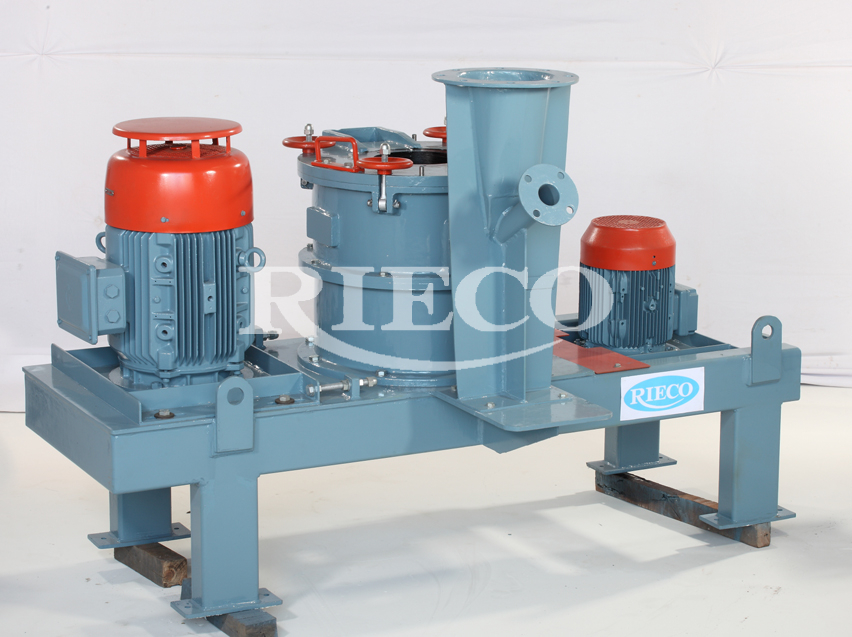How Does an Air Classifier Mill Work?

Air Classifying Mill
Introduction
Among the several innovative machinery that is imperative for material processing in terms of efficiency and precision, the air classifier mill stands out as one of the most imperative machinery for these needs.
An extensively used machine in food, pharmaceutical, and chemical industries, the air classifier mill delivers to the market a unique solution for the reduction and separation of the particle size.
This article will detail what air classifier mills are, how they operate, their key benefits, and why they are the best fit for certain applications.
What is an Air Classifier Mill?
ACMs, which stand for air classifier mill, are the most versatile milling machines designed for grinding materials to very fine powder.
In doing this, ACMs simultaneously classify particles by their size. That means the operation is a blend of hammer milling with air classification in producing evenly-sized particles with great efficiency.
A key advantage in air classifier mills is that both mechanical and aerodynamic forces operate simultaneously to determine precisely the resultant particle size distribution.
The grinding chamber, classifier wheel, feed inlet, and exhaust outlets are the typical components of the device.
The materials to be milled are fed into the grinding chamber, where they are crushed and then carried into the classifier.
Here, the finer particles are separated from the coarser ones and collected, allowing for optimal particle size control.
How Does an Air Classifier Mill Work?
The operation of an air classifier mill can be broken down into several key steps:
- Material Feeding: Material is first fed into the mill’s grinding chamber via a hopper. Gravity or mechanical systems typically assist this process, ensuring a consistent flow of materials.
- Preliminary Milling: In the milling chamber, there are rotating hammers or blades that further grind the material to the finest. The speed of rotation and the mill element configuration determine the size of the particles from this grinding.
- Air Flow and Classification: During grinding, air flow enters through the bottom of the mill. The airflow carries the ground particles upward to the classifier section located at the top of the chamber.
- Classification: On the classifier wheel, a bladed wheel imparting centrifugal force separates material according to the size of particles. Smaller particles are moved over into a collection area of the product; larger particles go back into a grinding chamber where they are rediminished.
- Collection: The ground fine particles are collected through a discharge outlet, ready for packaging or further processing, while the coarser materials are continuously recycled back for additional grinding, which ensures a high level of efficiency.
- Air Filtration and Exhaust: After processing, the air, which consists of not just the fine powder but also dust and other silt, gets filtered through a series of filters in order to take out any more particles before the air is allowed to vent out into the environment. This serves to meet standards set by regulatory bodies and protects the environment further.
Air Classifier Mill Main Advantages
Air classifier mills have several advantages that make them an excellent solution for many industrial applications:
- Accurate Control of Particle Size: The successful classification of particles enables the manufacturing of materials that have the right particle size for specific industry applications.
- Productivity: The integration of grinding and classification reduces the energy consumption and time, therefore increasing productivity in general.
- Versatility: The air classifier mills can process almost any material type, from soft to hard, brittle, or even anything that is hard.
- Hygiene: Air transport of material in ACM reduces contamination problems inherent with mechanical milling operations.
- Scalability: ACMs can be engineered to suit small scale applications and industrial size operations to cater for the range of businesses, small or big.
Conclusion
Air classifier mills represent a significant advancement in particle size reduction and classification technology.
Their innovative design makes for an efficient process of grinding and accurately uniform particle sieving that matches the needs of a preferred industry.
Regardless of whether you’re dealing with food, pharmaceuticals, or a chemical application,
understanding how air classifier mills work and how beneficial they can be to you or your industry can provide critical investment decisions on material processing needs.
Investment may well result in better productivity, quality product, and better process efficiency in such technology.




